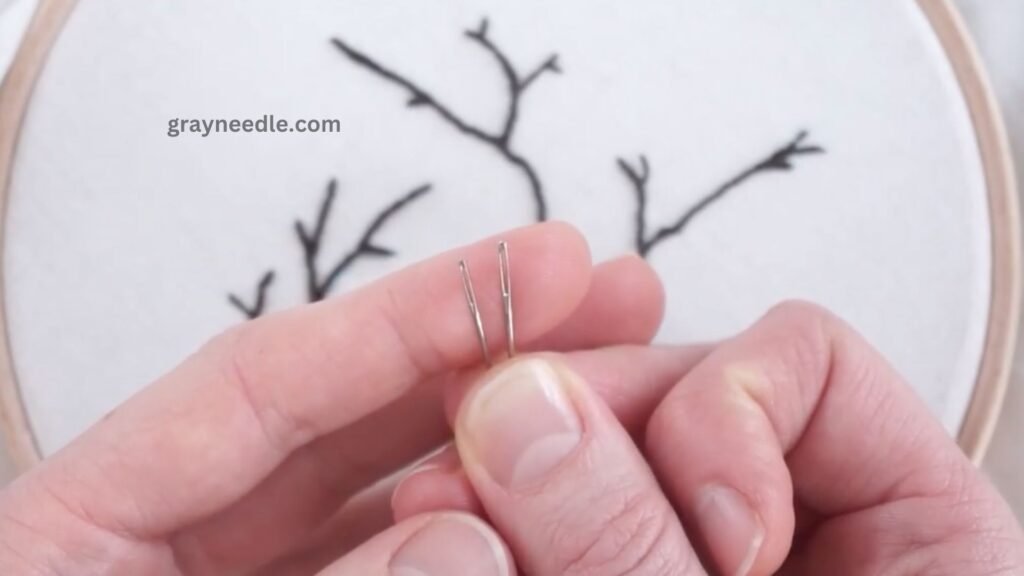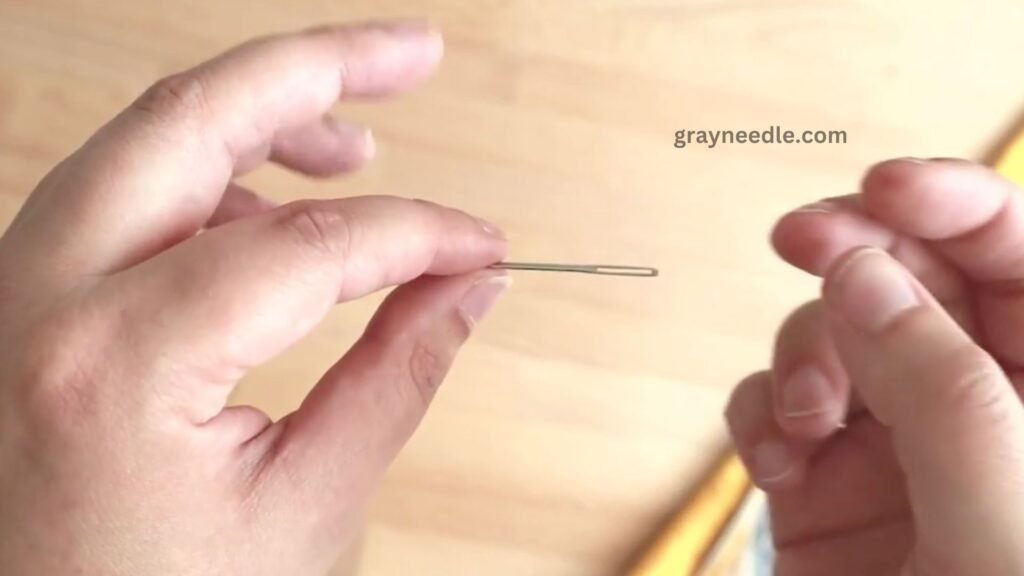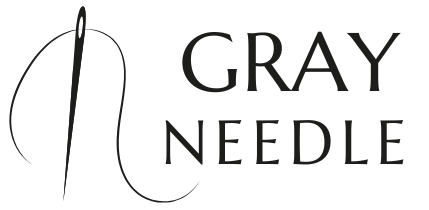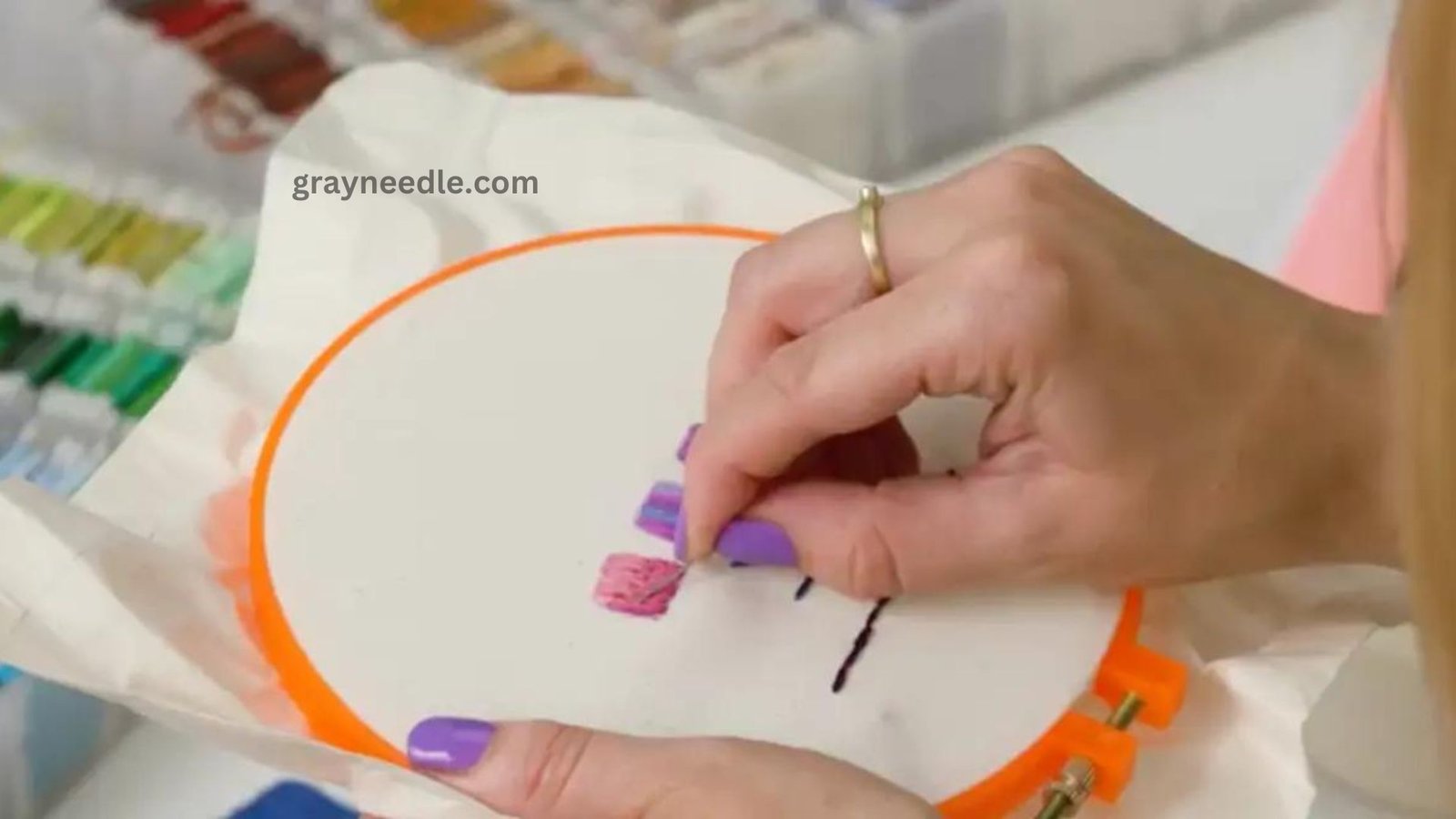A few prerequisites must be met in order to create this type of thread art, regardless of experience level. You need to have the necessary supplies and be familiar with embroidery techniques and knots. Just thread, needles, canvas, an embroidery hoop, and scissors are needed for embroidery, but you do need to make sure you’re using the right tools.
Selecting the appropriate needles for your embroidery project will help you succeed whether you’re stitching flowers, animals from the forest, or anything else!
Sewing Needles vs. Embroidery Needles
Standard sewing needles are usually not suitable for this type of crafts if you already have any lying around the house. Generally speaking, embroidery needles have a larger eye and are less sharp than sewing needles. With its tendency to break, snap, or fray when used with a sewing needle, embroidery thread is better suited for needles having these properties.
Rarely, an embroidered project will be best served by a sewing needle. You could need various tools, for example, if you’re working on something really detailed. Remember, this is not often the case.
Types of Embroidery Needles
Standard Embroidery Needles

Basic embroidery needles, also referred to as crewel needles, are an excellent starting point for your needlework. Because the shaft of an embroidery needle is thinner than the eye, the eye protrudes at the top of the shaft. It is the best choice for the majority of embroidery styles since its tip is sharper than that of other needles.
Because crewel needles exist in a variety of sizes, beginners in embroidery should look for a variety bundle. These variety packs ought to be available at any craft or hobby store.
Darning Needles
Darning needles have a small eye and are longer than other kinds of needles. These needles are excellent for huck and running stitch needlework because of their extra length.
Also Read: Discovering the Perfect Sewing Needle for Your Creative Projects
Tapestry Needles

The point of a tapestry needle is sharp, yet its eye is big enough to hold several kinds of embroidery threads. Stitching will be seamless as a result.
Chenille Needles
Because the shaft of a chenille needle is only marginally thinner than the eye, the bulge at the top of the former is smaller than that of a typical embroidery needle. These needles are excellent for crewel, chenille, and surface stitching. Additionally, they function particularly well with specialized threads like metallic and chenille.
Ribbon Needles
As the name suggests, ribbon needles are a must whenever you are using ribbon for embroidery.
Huck Needles
Huck needles, with their rounded, curved tips that make it easier to grip and scoop fabric when stitching, are preferred by some embroiderers. Try a huck needle once you’ve become accustomed to using a normal needle to see which you prefer.
Milliner Needles
Milliner needles, sometimes called straw needles, are longer than regular embroidery needles. Because the eye and the shaft are the same thickness, there is no bulge at the top, which is the second main distinction. Since millinery needles are perfect for winding the thread around the needle, they simplify techniques such as drizzling stitches and French knots.
Gold-Plated Needles
Generally used to prevent allergic reactions to other metals, gold-plated needles are more expensive than their counterparts. However, gold is more resistant to humidity and other environmental elements, therefore these needles usually survive longer before breaking.
When to Use Each Needle
- When working with delicate fabrics and fine details, crewel needles are ideal.
- For needlepoint and cross-stitch stitching, tapestry needles are perfect.
- Sharps needles work well with a wide range of needlework methods.
- When adding beads or sequins to your embroidery, beading needles are a necessity.
- Using thicker threads and producing texture are two excellent uses for chenille needles.
- For ornamental stitches and smocking and other embroidery techniques, Milliners are great needles.
Final Thoughts
Any embroidery project’s success depends heavily on the use of embroidery needles. Embroiderers are better equipped to select the appropriate tool for each unique task when they are aware of the many types of needles and their applications. Using the right needle will guarantee smooth and accurate stitching whether you’re working on larger projects, adding beads, or stitching complex details. As you begin your adventure with hand stitching, keep in mind that learning is an ongoing process. To improve your skills, meet like-minded others, and acquire priceless knowledge, think about signing up for beginner’s hand stitching workshops. Accept the craft of hand stitching, try out various needles, and let your imagination run wild. Enjoy your sewing!


1 thought on “Specialty Needles for Embroidery: Which Ones to Use?”